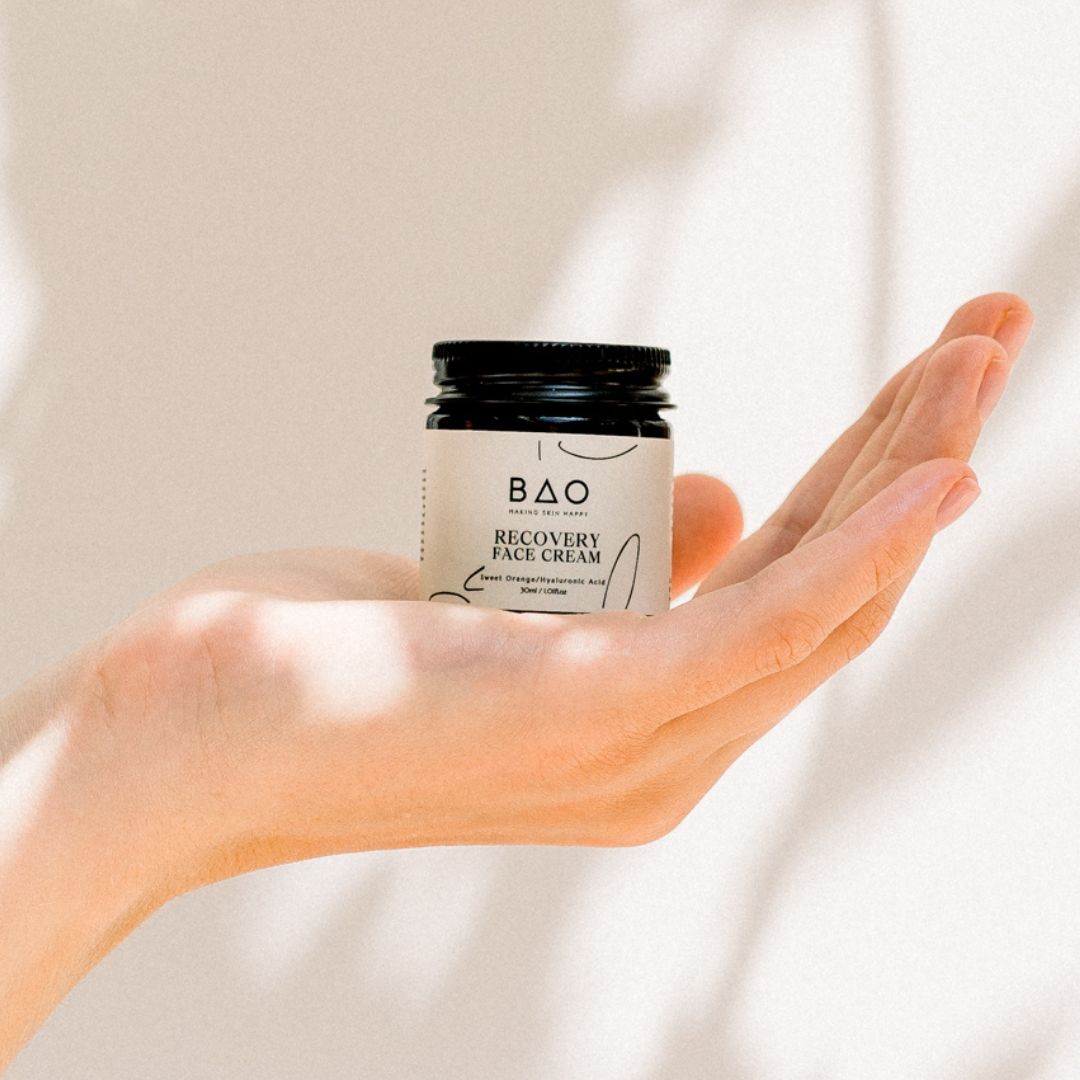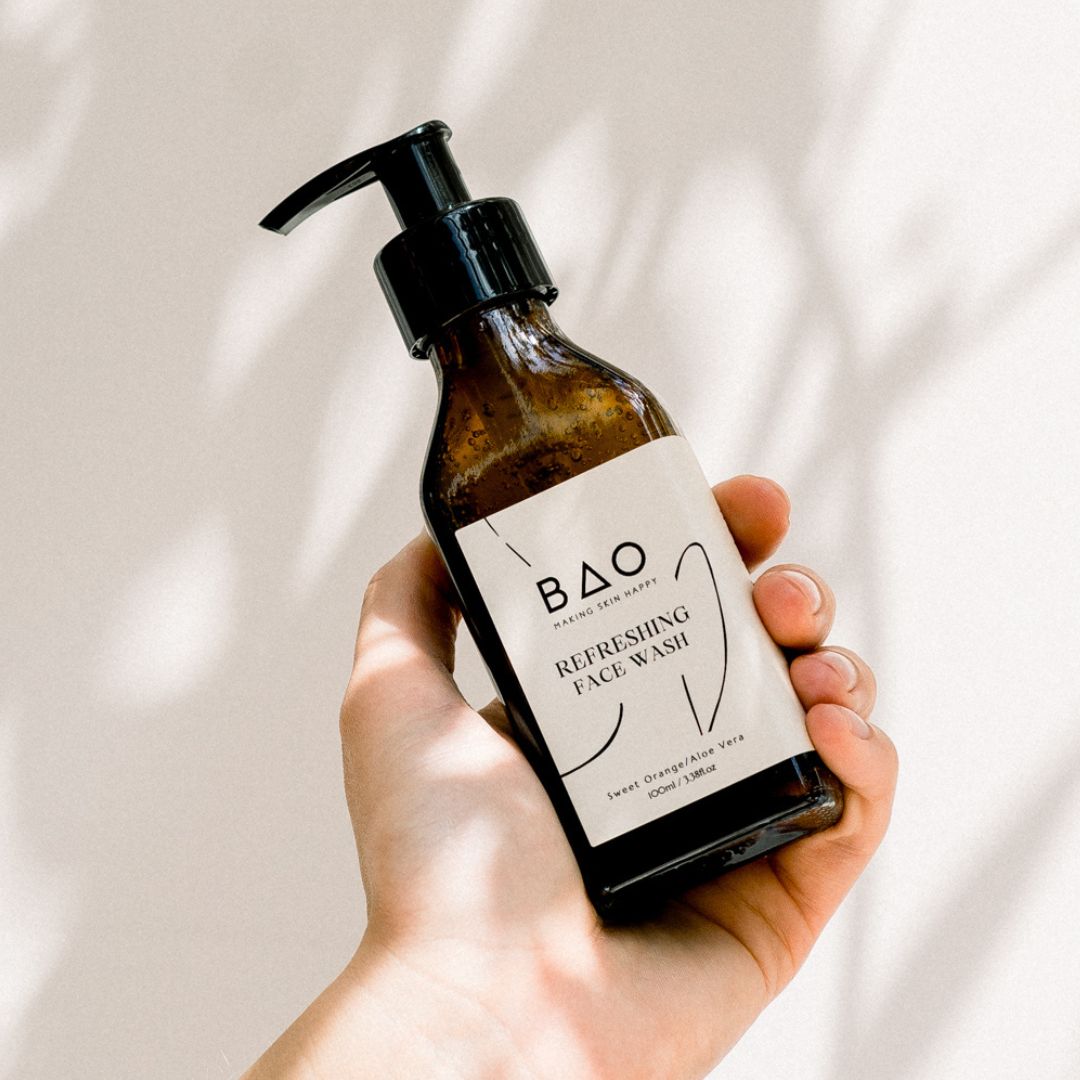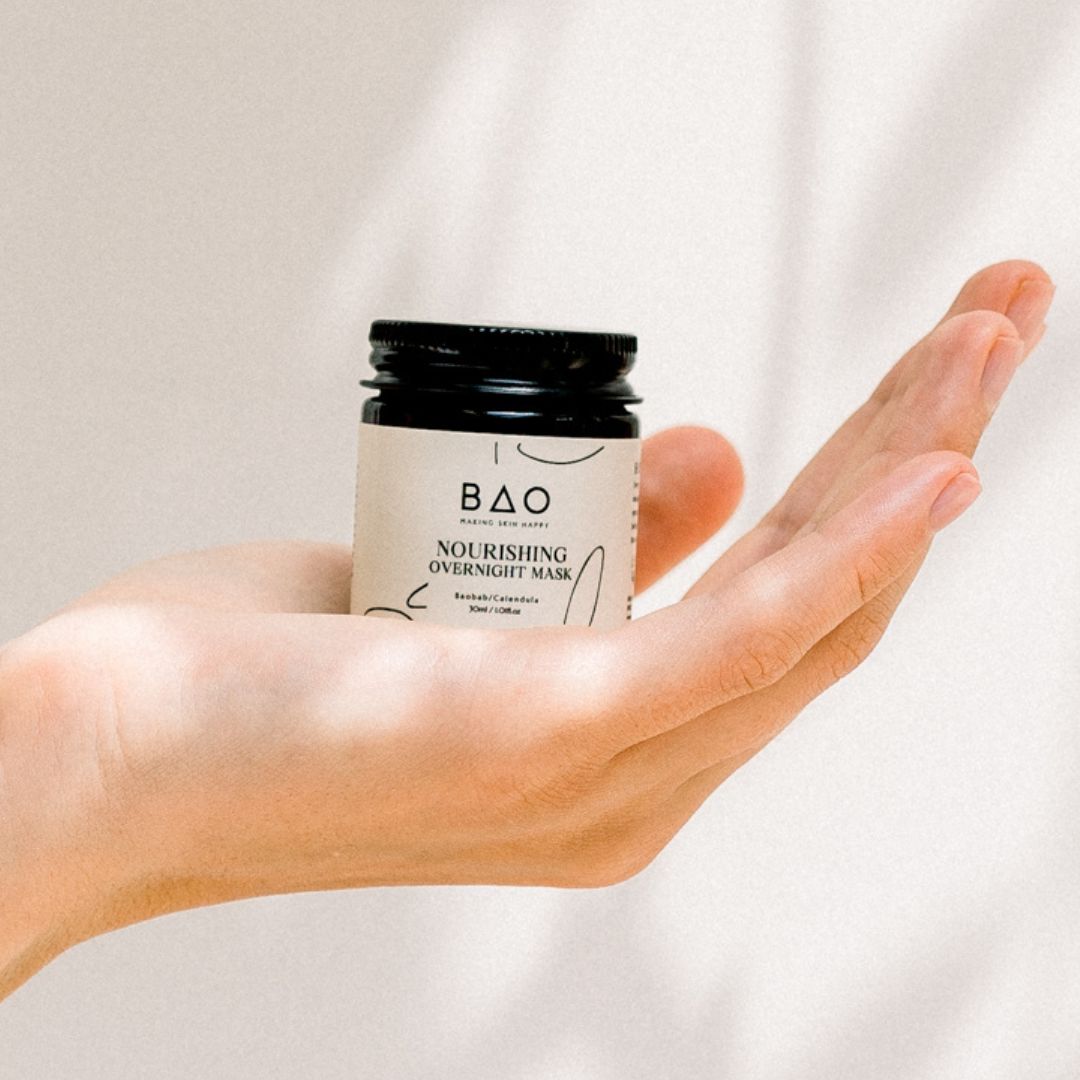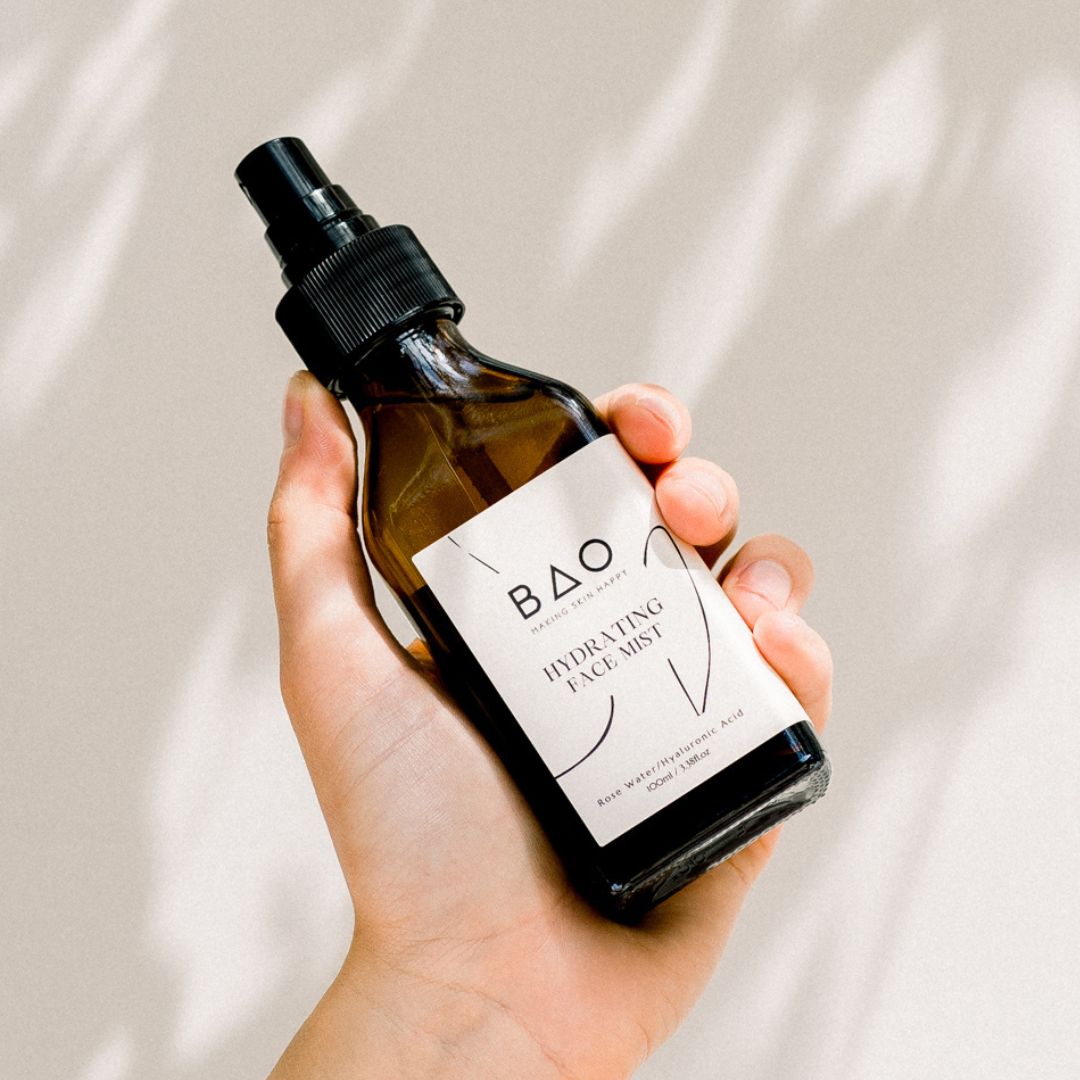Your Skin Deserves Better
Your skin is your largest organ — and it works hard to protect you every day. That’s why it’s so important to be mindful of what we put on it. Unfortunately, many skincare and cosmetic products contain ingredients that can do more harm than good — especially when it comes to sensitive or reactive skin.
Let’s break down 7 ingredients you’ll want to avoid, why they’re used, and what to look for on the label.
1. Parabens
What are they?
Parabens are synthetic preservatives used since the 1950s to extend product shelf life by preventing the growth of bacteria and mould.
Why avoid them?
Parabens are known to cause skin sensitivities, allergic reactions, and have been linked to hormone disruption.
Look out for:
Propylparaben
Butylparaben
Methylparaben
Where they hide:
In skincare, makeup, shampoo, deodorants, food, and even glue and shoe polish!
💡 At BAO, I make every product in small, fresh batches — no need for harsh preservatives to keep things shelf-stable.
2. Sodium Lauryl Sulfate (SLS)
What is it?
SLS is a foaming agent that traps oil and dirt to help rinse it away. While it might leave skin feeling “squeaky clean,” it’s also known to strip the skin’s natural oils.
Why avoid it?
SLS can cause dryness, irritation, and disrupt the skin barrier — especially if your skin is already sensitive.
Where it hides:
Shampoo & conditioner
Toothpaste & mouthwash
Body wash, hand soap, sunscreen
🚫 And no — toothpaste isn’t for your skin! Despite old myths, applying it to breakouts can cause burns and irritation.
3. Phthalates
What are they?
Synthetic chemicals used to make plastics more flexible — and sadly, still found in many beauty and household products.
Why avoid them?
Phthalates are known endocrine disruptors, meaning they can interfere with hormone function. This is especially risky for pregnant women and young children.
Where they hide:
Fragranced products
Nail polish
Hair spray
Household cleaners
Food packaging
🕵️ They’re often hidden behind the term “fragrance” on an ingredient list — so opt for fragrance-free or naturally scented products when possible.
4. Mineral oil
What is it?
A highly refined byproduct of petroleum that forms a barrier on the skin to prevent moisture loss.
Why avoid it?
Although it’s purified for cosmetic use, mineral oil sits on top of the skin, which can clog pores, trap bacteria, and lead to breakouts or irritation — especially if your skin is acne-prone or sensitive.
Where it hides:
Moisturisers
Baby oil
Ointments and creams
🌿 There are so many beautiful plant-based oils that hydrate without suffocating your skin — go for ingredients like jojoba, baobab, or calendula instead.
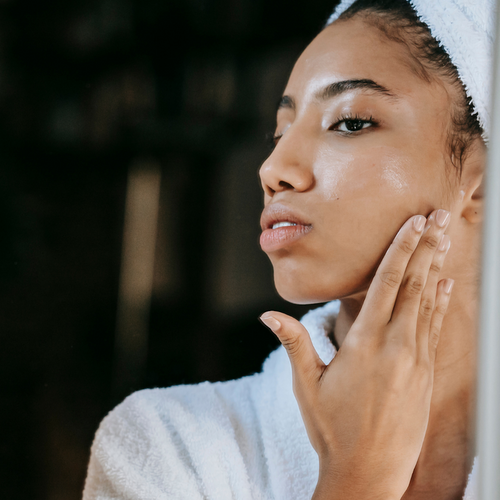
5. Petroleum jelly
What is it used for?
Moisturisers, baby products, protecting skin during hair dye application.
Why avoid it?
Petroleum jelly is refined from crude oil, and while cosmetic-grade versions are purified, it still forms a heavy, pore-blocking barrier. It creates the illusion of hydration but prevents moisture from leaving or entering the skin, which can actually lead to increased dryness over time.
What are the common issues?
It’s not water-soluble, meaning it doesn't absorb — it just sits on your skin.
🧡 Look for hydrating ingredients like shea butter or cocoa butter instead — they moisturise deeply and let your skin breathe.
6. Parfum (aka Fragrance)
What is it?
Parfum is a catch-all term for a chemical cocktail used to add fragrance to products. It can include dozens of undisclosed synthetic ingredients, many of which are known irritants.
Why avoid it?
Parfum is one of the most common causes of skin allergies, redness, itching, and sensitivity — especially for those with reactive or delicate skin. Since brands aren’t required to list what’s in their "fragrance," you’ll never really know what you're applying.
Look out for:
Fragrance
Parfum
Aroma
Where it hides:
In everything from perfume, moisturisers, face wash, baby wipes, hand creams, and even deodorants.
💡 Opt for fragrance-free or naturally scented products using essential oils instead — they’re kinder to your skin and your senses.
7. Formaldehyde
What is it?
Formaldehyde is a preservative used to stop bacteria growing in beauty and personal care products, helping extend shelf life.
Why avoid it?
Even at low levels, formaldehyde is a known skin irritant and potential carcinogen. It can cause itching, redness, dryness, and worsen skin conditions like eczema. It's especially risky with frequent exposure.
Look out for:
DMDM Hydantoin
Methylene Glycol
3-Dioxane
Quaternium-15
Where it hides:
You’ll often find it in nail polish, nail hardeners, shampoo, body wash, and even baby products.
💡 If you regularly use nail or hair treatments, always double-check the ingredients and opt for formaldehyde-free options where possible.



